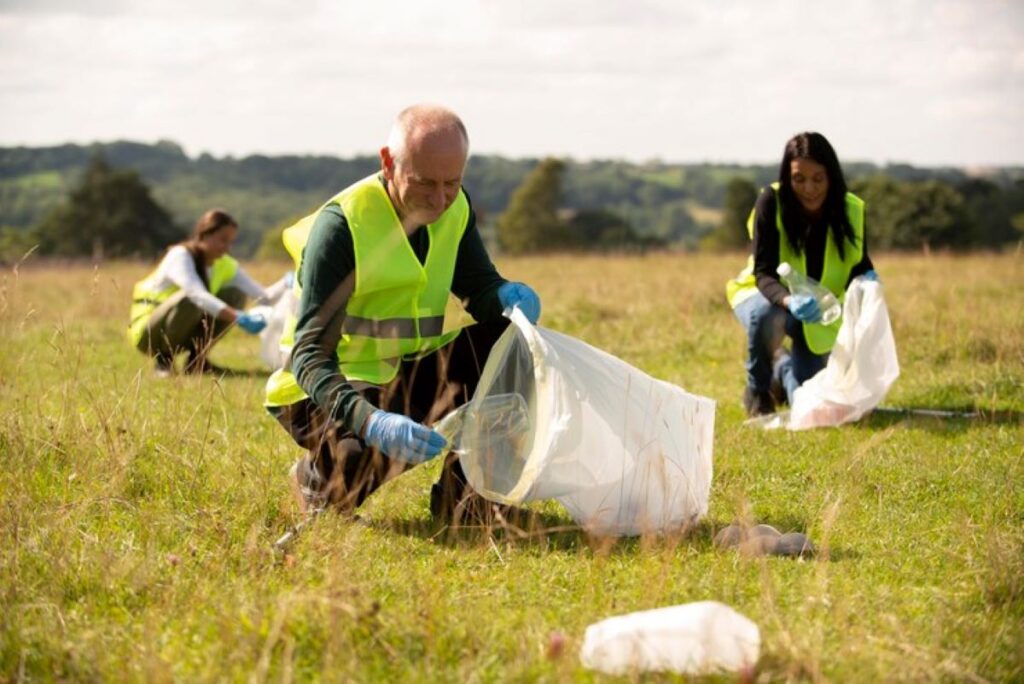In recent years, the importance of sustainable waste management has gained significant traction in Australia. With increasing awareness of environmental issues, many households and businesses are turning to green waste removal services. However, understanding the costs associated with these services can be complex. This article aims to break down the various factors that influence the pricing of green waste removal and provide insights into making informed decisions.
The Importance of Green Waste Removal
Green waste removal is crucial for maintaining a healthy environment. It involves the disposal of organic materials such as grass clippings, leaves, branches, and food scraps. By diverting these materials from landfills, green waste services help reduce greenhouse gas emissions and promote composting, which enriches soil health.
Moreover, many local councils in Australia have implemented green waste collection programs, encouraging residents to participate in sustainable practices. This not only supports environmental goals but also fosters a sense of community responsibility towards waste management. The collective effort of residents in these initiatives can lead to significant reductions in overall waste, creating a cleaner and more sustainable living environment for future generations.
Environmental Benefits
The environmental benefits of green waste removal are manifold. When organic waste decomposes in landfills, it produces methane, a potent greenhouse gas. By opting for green waste removal, individuals and businesses contribute to reducing these emissions. Furthermore, composting organic waste transforms it into nutrient-rich soil, which can enhance plant growth and support local ecosystems. This process not only aids in soil fertility but also plays a vital role in water retention, reducing the need for chemical fertilisers and promoting biodiversity in gardens and parks.
Community Initiatives
Many local councils offer subsidised green waste removal services as part of their commitment to sustainability. These initiatives not only make it easier for residents to dispose of organic waste responsibly but also educate the community about the importance of recycling and composting. Engaging in these programs can foster a culture of environmental stewardship. Additionally, community workshops and events often accompany these services, providing residents with practical knowledge on how to compost effectively at home, thereby maximising the benefits of their green waste. Such initiatives also encourage neighbours to collaborate, share resources, and even exchange compost, further strengthening community bonds while promoting eco-friendly practices.
Factors Influencing Costs
The costs associated with green waste removal services can vary significantly based on several factors. Understanding these elements can help individuals and businesses make informed choices when selecting a service provider.
Type of Service
Green waste removal services can be categorised into different types, each with its own pricing structure. For instance, some companies offer one-off collection services, while others provide regular scheduled pickups. One-off services may have higher per-visit costs, but they are often more suitable for those with occasional green waste needs. In contrast, regular services may offer discounted rates for ongoing collections, making them more economical for frequent users. Furthermore, some providers may also offer specialised services, such as the collection of specific types of green waste, like tree branches or garden debris, which can influence the overall cost depending on the complexity and nature of the waste.
Volume of Waste
The volume of green waste being disposed of is another critical factor influencing costs. Most service providers charge based on the amount of waste collected, often measured in cubic metres or weight. Larger volumes typically incur higher fees. Therefore, it is advisable for customers to estimate their green waste accurately and consider bulk disposal options if they have substantial amounts. Additionally, some companies may provide incentives for larger collections, such as reduced rates for bulk pickups, which can be particularly beneficial for businesses or community projects that generate significant amounts of green waste during specific seasons, such as spring or autumn.

Location and Accessibility
The geographical location of the service can also impact pricing. Urban areas may have more competition among service providers, potentially leading to lower prices. Conversely, rural areas may face higher costs due to increased transportation expenses and limited service options. Additionally, the accessibility of the waste for collection can affect pricing; if a service provider needs to navigate difficult terrain or access hard-to-reach areas, this may incur extra charges. Moreover, local regulations and landfill fees can vary by region, further influencing the overall cost of green waste removal. In some cases, companies may also pass on the costs associated with compliance to environmental standards, which can be an important consideration for eco-conscious customers looking to ensure their waste is disposed of responsibly.
Additional Costs to Consider
Beyond the basic service fees, there are additional costs that customers should be aware of when engaging green waste removal services. These can include disposal fees, service surcharges, and potential penalties for improper waste segregation.
Disposal Fees
Some service providers may charge disposal fees in addition to the collection costs. These fees cover the expenses associated with processing and disposing of the green waste at designated facilities. It is essential to clarify with the service provider whether these fees are included in the quoted price or if they will be added later.
Service Surcharges
In certain circumstances, service surcharges may apply. For example, if a customer requests a same-day service or requires additional assistance beyond the standard service, extra charges may be incurred. Understanding the terms and conditions of the service agreement can help avoid unexpected costs.
Penalties for Improper Waste Segregation
Proper waste segregation is vital for effective green waste removal. If customers mix non-organic materials with green waste, they may face penalties or additional charges. It is crucial to follow the guidelines provided by the service provider to ensure compliance and avoid extra costs.
Choosing the Right Service Provider
With numerous green waste removal services available, selecting the right provider can be daunting. However, a few key considerations can help streamline the process and ensure satisfaction.
Reputation and Reviews
Researching the reputation of a service provider is essential. Online reviews and testimonials can offer valuable insights into the quality of service and customer satisfaction. Engaging with local community forums or social media groups can also provide recommendations based on personal experiences.
Transparent Pricing
Look for service providers that offer transparent pricing structures. A reputable company should provide a detailed breakdown of costs, including any potential additional fees. This transparency helps customers understand what they are paying for and allows for better budgeting.
Environmental Commitment
Choosing a service provider that demonstrates a commitment to environmental sustainability can add value to the service. Many companies engage in responsible disposal practices, such as composting or recycling green waste. Opting for a provider that prioritises eco-friendly methods aligns with the customer’s values and contributes to broader environmental goals.
Cost-Effective Alternatives
While professional green waste removal services are convenient, there are cost-effective alternatives that individuals and businesses can consider. These options may require more effort but can lead to significant savings.
Composting at Home
Composting is an excellent way to manage green waste while enriching the garden. By setting up a compost bin, individuals can recycle organic materials such as fruit and vegetable scraps, grass clippings, and leaves. Over time, these materials break down into nutrient-rich compost that can be used to enhance soil quality. Many local councils provide resources and workshops on composting, making it an accessible option for most households.

Community Green Waste Days
Many local councils organise community green waste collection days, allowing residents to drop off their organic waste for free or at a reduced cost. These events promote community engagement and provide an opportunity for residents to dispose of their green waste responsibly without incurring service fees.
DIY Green Waste Disposal
For those with access to a vehicle, transporting green waste to a local recycling facility can be a cost-effective solution. Many facilities accept green waste for free or at a minimal charge. This option not only saves money but also allows individuals to take an active role in their waste management.
Conclusion
Understanding the costs behind green waste removal services is essential for making informed decisions. By considering factors such as the type of service, volume of waste, and additional costs, customers can better navigate the pricing landscape. Moreover, exploring alternatives like composting or participating in community initiatives can provide cost-effective solutions while contributing to environmental sustainability.
Ultimately, choosing the right green waste removal service requires careful consideration of individual needs and priorities. By prioritising transparency, reputation, and environmental commitment, customers can ensure they select a provider that aligns with their values and supports their waste management goals.
More to Read : Central Coast Tree Removal Services: What to Expect

